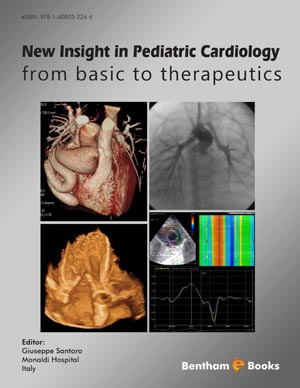Abstract
Epidemiological studies, clinical observations and recent advances in molecular genetics are shedding increasing light on the genetic origin of congenital heart disease (CHD). Chromosomal anomalies, Mendelian syndromes or associations account for nearly 30% of all congenital cardiac malformations. These developmental anomalies may be part of well-defined syndromes due to chromosomal or submicroscopic genomic anomalies or may be non-syndromic as a consequence of still unidentified genes with sporadic occurrence in families. This paper summarizes the available findings from literature on the inference of genetics on cardiac development by classifying the congenital heart diseases as cono-truncal defects, atrio-ventricular canal and septal defects, right-sided obstruction and left-sided obstruction.
Cono-truncal defects represent an anatomically heterogeneous group of CHDs affecting the outflow tract of the ventricles and the arterial pole of the heart. The most common malformations of this group are tetralogy of Fallot, pulmonary atresia with ventricular septal defect, truncus arteriosus and interrupted aortic arch. These CHDs are associated with genetic syndromes in 25-40% of cases and even in non-syndromic forms show a high incidence of mono-genic abnormalities.
Atrio-ventricular canal is a complex malformation due to abnormal septation of the “crux cordis” resulting in ostium primum atrial septal defect, inlet ventricular septal defect and common atrio-ventricular valve. It is almost always associated with genetic syndromes, being non-syndromic in only 25% of cases. However, septal defects other than atrio-ventricular canal are rarely due to genetic syndromes, ranging from 3% to 25% of cases, yet with a high rate of segregation in some families.
Valvular or vascular-elicited right sided obstructions, are due to genetic syndromes in about 10% of cases and this association results in difficult treatment due to the ineffectiveness of any percutaneous treatment and extent of the lesions along the pulmonary trunk.
Among left heart obstructions, supra-valvular stenosis is a well-know malformation due to disruption of the elastin gene associated with Williams syndrome in many cases.
Conversely, aortic coarctation and other left-sided heart stenosis or hypoplastic malformation are often non-syndromic, being associated with genetic syndromes in less than 10% of cases.
In conclusion, improved molecular genetic technologies has led to the discovery of several causes of syndromic and non-syndromic CHDs. Nevertheless, much work remains in identifying in etiology of non-syndromic CHDs, since the number of genes known to be involved is still limited.
Keywords: Genetics, congenital heart disease, aortic stenosis, atrial septal defect, atrio-ventricular canal, conotruncal defects, hypoplastic left heart syndrome, interrupted aortic arch, pulmonary stenosis, tetralogy of Fallot, truncus arteriosus, ventricular septal defect.






















